Sokoku Industries
 | |
| Type | Public |
|---|---|
| Industry |
|
| Founded | 1584 AN (167 Norton years ago) |
| Headquarters |
First Agnigrad, later Koningin Siserawerf, |

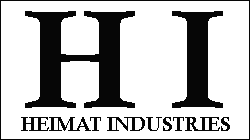
Sokoku Industries, previously known as Heimat Industries, is a Shirerithian company founded in 1584 AN by the Kildarian entrepreneur Albert Heimat. Originally a moderately sized mining company, Albert envisioned greater aspirations and converted it into a conglomerate comprising steel fabrication and arms manufacturing.
Over time, the corporation ventured into various sectors. As the number of ethnic Jing grew in the government and in the industrial sector, a rename marked the conclusion of Kildarian influence over the firm. Eventually, it turned out to be one of the primary providers of military equipment to the Jingdaoese Empire and the USSO, profiting from the Cold War against the Raspur Pact. Eventually it became the main producer of military hardware in the Eastern Imperium.
History

In 1584 AN, the family Heimat, a wealthy family from Dalmacija, observed that Kildare was gradually industrializing due to its increased isolation from the Benacian mainland. Many felt that Kildare at that time had to stand on its own feet, as trust in the Imperial Government - constantly embroiled into civil war or domestic conflict - had plummeted. Seeking a share of the pie, Albert Heimat began acquiring small companies using the profits from his mining business. Risky loans ultimately paid off, leading to investor interest and subsequent expansion.
Headquartered in Agnigrad, Albert brought together his wealthy relatives to invest in a struggling gold mining company. Their efforts led to the discovery of one of the largest gold deposits in the Province of Qianjin. New technologies and machinery allowed them to excavate even deeper, resulting in numerous successes that enabled Albert to request a monopoly over all gold extraction in the county, which he obtained from the Kildarian Ducal government.
Profit reinvested in new projects saw Albert buy iron mines in Absentia (nowadays in the Benacian Union) and begin exploiting them for high-quality steel production. Exported to Kildare, this steel was utilized in various industries such as manufacturing ammunition and armaments, and ship construction. A decline in the company occurred around 1600 AN, but a revival followed after the Revolution of 1617 when Albert invested heavily, making the company the exclusive provider of heavy dreadnought-type ships for the newly established independent Kildarian navy.
By the beginning of the seventeenth millennium, Albert's brother who had served with the coast guard - Haribald Heimat - introduced the production of Kattei-class battleships and expanded the company through lucrative deals with the provincial governments of Jinkeai. By then, the Kildarian government had been replaced by the Jingdaoese and the company moved its headquarters northwards, to Sisera Wharf, becoming the principal shipbuilder for the new administration and empire.
In 1647 AN (eight years after the death of the company's founder), the company was renamed to "Sokoku Industries," representing patriotism toward their homeland according to the board. In 1679 AN, they acquired the Gong Shipyards, fully owned by the Goburin Emperor, partially paying in cash and stock. Despite uncertainty among the board regarding the specifics of the transaction, the acquisition of the smaller company resulted in the Goburin Emperor owning half of Sokoku Industries' shares.
Throughout the rest of the seventeenth century, the company remained one of Jingdao's most important manufacturers. Directly, the company provided work for more than 200,000 employees, but indirectly - through subsidiaries, among other things - more than one and a half million Jingdaoese and Kildari are employed.

The Post-Chidao Troubles led to headaches for the company, which was headquartered safely in the north. Its shipping facilities were also spared any violence (the island of Gong was protected by the naval fleet and, like Jinkeai, was neutral in the civil strife). Nevertheless, several of its factories and mining operations were located in the territories occupied by numerous factions. The short-lived existence of the Apollonian Empire, followed by the Democratic Apollonian Republic of Kildare, saw a slow return to normalcy.
It was not until 1715 AN - several years after the integration of the territories into Shireroth - that the company was able to repossess all of its assets. However, 20 years of stagnation meant that the company had lost much of its R&D by then, seriously weakening its competitive position in Shireroth and the Raspur Pact. Subsidies from the Thuylemans Government, in combination with the influx of technological know-how from the Benecian continent, made it possible for the company to pick up the thread again with, among other things, the mass production of the IMW-3 Snark..
Assets
- Headquarters, Sisera Wharf.
- Gangdiguo Small Arms Ammunition Factory.
- Gold mines, Dalmacija.
- Heimat Steelworks, Agnigrad, Dalmacija.
- Shipyard, Nigrad.
- Koningin Siserawerf, Sisera Wharf, Jinkeai.
- Gong Shipyards, Gong
- Sokoku Academy, Gangdiguo
- Sokoku Automobiles
Former assets
- Sokoku Industries Passio-Corum, Passio-Corum. Lost with the collapse of the Bassarids (early 18th century).
- Steel mines and foundry in Absentia, nowadays Benacian Union.
Products
While the profits from the gold industry gave the original startup of Sokoku Industries a collateral to expand in other industries, the focus of the company nowadays lies on the creation of new weapons and ships.
Commercial
| Name | Image | Notes | Subsidiary |
|---|---|---|---|
| Passenger car | |||
| Heimatmobile | 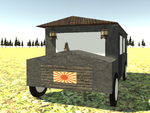 |
Modern car in an antique style. Very robust. | Sokoku Automobiles |
| Sokoku Ronin |  |
Five seat vehicle | Sokoku Automobiles |
| Sokoku Ka |  |
Faster than the Ronin, created for use by law enforcement. | Sokoku Automobiles |
| Truck | |||
| Sokoku Navigator | File:Sokoku Navigator.png | Sokoku Automobiles | |
Military
| Name | Type | Quantity | Image | Notes | Subsidiary |
|---|---|---|---|---|---|
| Armoured vehicles | |||||
| IMW-3 Snark | Mobile Command Platform |  |
|||
| Taiyo III | Light tank | File:Taiyo III.png | |||
| Taiyo IV | Light tank | File:Taiyo IV.png | |||
| Mango-H1 Tank | Heavy tank | ||||
| J-23 Heavy Tank | Heavy tank |  |
A grand Wunderwaffen, inspired by Jingdaoese love for gun turrets and Benacian love for over-the-top weaponry! | ||
| Ikari 2A SPAAG | Self-propelled anti-aircraft gun |  |
|||
| Oni 1717 AFV | Armoured personnel carrier (Armoured Forward Vehicle). |
File:Oni 1717 AFV.png | |||
| Sokoku Rec-1722A | Scout vehicle | File:Sokoku Rec-1722A.png | Infantry Mobility Vehicle for reconnaissance and escort vehicle, open and very fast reconnaissance jeep vehicle. | ||
| Sokoku Rec-1722B | Patrol vehicle | File:Sokoku Rec-1722B.png | Infantry Mobility Vehicle for reconnaissance and escort vehicle, closed reconnaissance vehicle, focused more on defense and potential confrontations. | ||
| Artillery | |||||
| 80mm field gun | Artillery field gun | 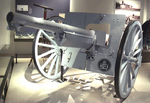 |
Refurbished legacy pieces | ||
| Apollo HA-IX | Mobile Heavy Artillery |  |
|||
| Aviation | |||||
| Raven IV Model | Multirole fighter |  |
Ex-Jing rebuilds | ||
| Jan-van-Gent VII Model | Transport plane |  |
Ex-Batavian rebuild | ||
| Jan-van-Gent XI Model | Transport plane |  |
|||
| Xinshi-R07 Fighter Jet | Jet Fighter | 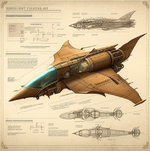 |
|||
| SoF-1720 | Jet Fighter | File:SoF-1720.png | Full name: Sokoku Fighter-1720 | ||
| Sisera S-88 | Strategic stealth bomber | 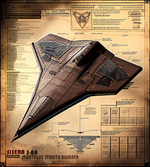 |
Developed in the latter days of the Chidao era (1695 AN). Project was put on halt till it was revitalized in 1711. | ||
| GAV-4(U) Jackalope | Utility (troop transport) Reconnaissance Anti-Grav Ship |
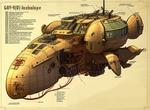 |
Rebuilt from legacy airframes originally built by Red Bear LLC. Focus on troop transport and aerial reconnaissance. | ||
| Weaponry | |||||
| AG-11 machine gun | Automatic machine gun | File:AG-11 machine gun.png | General-purpose machine gun for vehicles | Gangdiguo Small Arms Ammunition Factory | |
| GANG 35mm twin cannon | Towed anti-aircraft gun | File:Gangdiguo 35mm twin cannon.png | Gangdiguo Small Arms Ammunition Factory | ||
| G19 machine gun | Heavy machine gun | File:G19 machine gun.png | Gangdiguo Small Arms Ammunition Factory | ||
| Ships | |||||
| Meiyo-class vehicle cargo ship | Vehicle cargo ship | 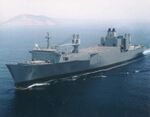 |
Shirerithian Hegemony Implementation Plan (1718–1727) | ||
| Ozymandias Dreadnought Class | Battleship | ||||
| Kattei-class battleship | Battleship |  |
Shirerithian Hegemony Implementation Plan (1718–1727) | ||
| Blackrock-class carrier | Aircraft carrier |  |
Shirerithian Hegemony Implementation Plan (1718–1727) | ||
| Hangmu-class carrier | Aircraft carrier | Shirerithian Hegemony Implementation Plan (1718–1727) | Gong Shipyards | ||
| Magigarp-class frigate | Anti-submarine warfare frigate |  |
Shirerithian Hegemony Implementation Plan (1718–1727) | ||
| Sheng-class cruiser | Battlecruiser |  |
Shirerithian Hegemony Implementation Plan (1718–1727) | ||
| Salome-class destroyer | Destroyer | File:Salome-class destroyer.png | Shirerithian Hegemony Implementation Plan (1718–1727) | ||
| Other Equipment | |||||
| M15 Adrian helmet | Helmet |  |
|||
Uniform
- Police and public service uniforms
- Tegong 1680 Policing Uniform, Tegong standard outfit for policing and intimidation.
- Fire Brigade 1700 Uniform, fire brigade uniform.
- Military Police 1718 Uniform, dark blue uniform for the military police.
- Mango Rangers 1715 Uniform, red uniform for the Imperial Marshals.
- Military uniforms
- IM-1720 Uniform, infantry combat uniform.
- MM-1721 Uniform, Mountain Infantry combat uniform.